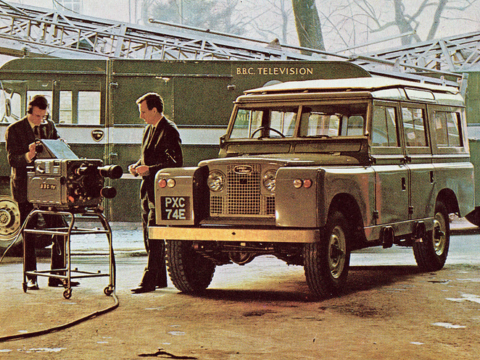Copyright resides with the original holder, no reproduction without permission.
The photograph shows two men working on a Marconi Mk3 camera belonging to MCR 15 or 16. Is anyone able to identify them? In the background are two Midlands Eagle Tower radio links vehicles. The Landrover was registered in 1967, so the photo might have been taken at Carpenter Road. If you can add any more information, please add a comment.
Thanks to Robin Stonestreet to letting me know about this photograph.
The following comments were left on the Pebble Mill Facebook page:
Malcolm Hickman: ‘It’s certainly a Midland tower in front, but I don’t recognise the location or the two guys. There were 3 land rovers in Brum in the early 70s. Two on links, one long and one short wheelbase with no side windows and a sound OB with windows. All had BBC Midland logos on. Plus there is a white building in the background, Carpenter Road was red brick. Kendal Avenue was white painted.’
David Kirkwood: ‘Fond memories of the Marconi Mk3. Not sure it’s Birmingham though equally not sure where else they still used that camera in 1967?‘
Glynne Dummett: ‘Operated the Eagle Tower many times, was a bitch to drive with the cage forever banging on the cab roof.’
Keith Brook (aka Scouse): ‘ Remember the Marconi from my Ally Pally days. Such fun when I sent the turret the ‘long way’ round!‘


